 And please do so filled with crushing regret and in prolonged pain. Now get lost. 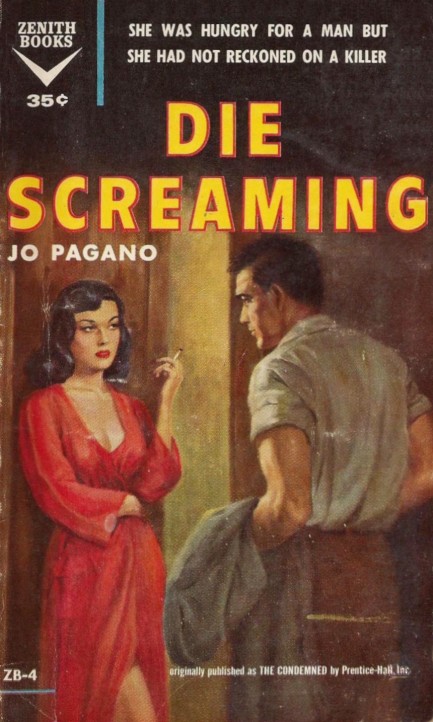
Above: an uncredited cover for Jo Pagano's 1958 novel Die Screaming featuring art of a femme fatale giving the male figure the exact look your wife or girlfriend gives you when she's absolutely over your shit. This first appeared in 1947 as The Condemned, which was adapted into a 1950 movie called The Sound of Fury, and in turn re-released as Try and Get Me!, before reverting back to literary form and becoming what you see above. We like Die Screaming best as a title, but Try and Get Me! is actually more descriptive, as the book deals with an everyman who at his lowest point finds himself in thrall to a vicious criminal, leading to a murder, a manhunt, and the inexorable enactment of justice. We may check out the movie later.
 He's also managed to double his entendre. 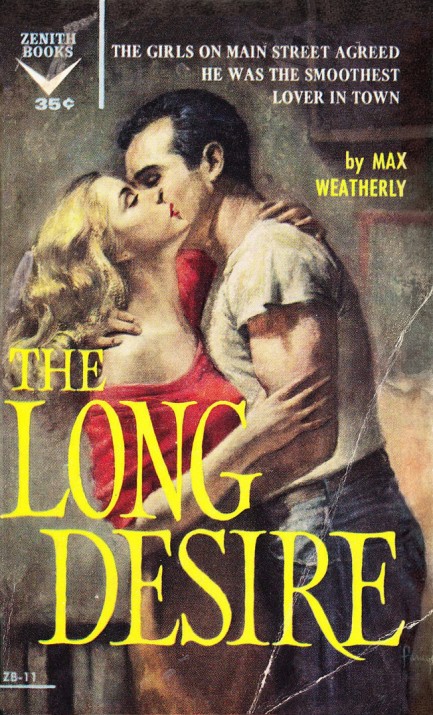
Above, beautiful cover art by Jack Faragasso for Max Weatherly's The Long Desire, published 1959 by Zenith Books. Faragasso had an extensive career which you can learn about at his website. We also shared a couple of other pieces from him, here and here.
 Paperback publishers double down on a legendary model. 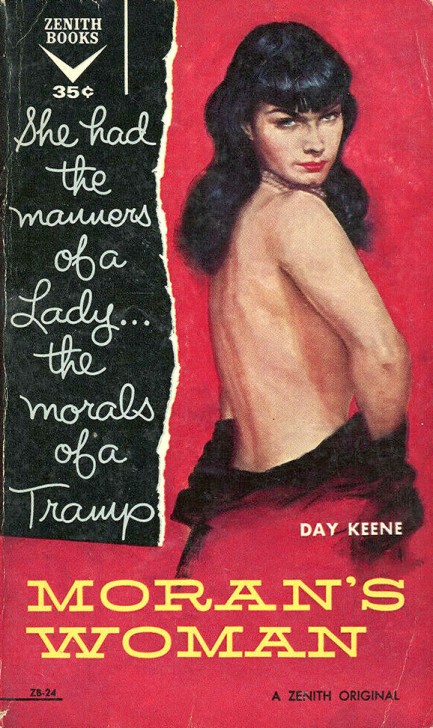 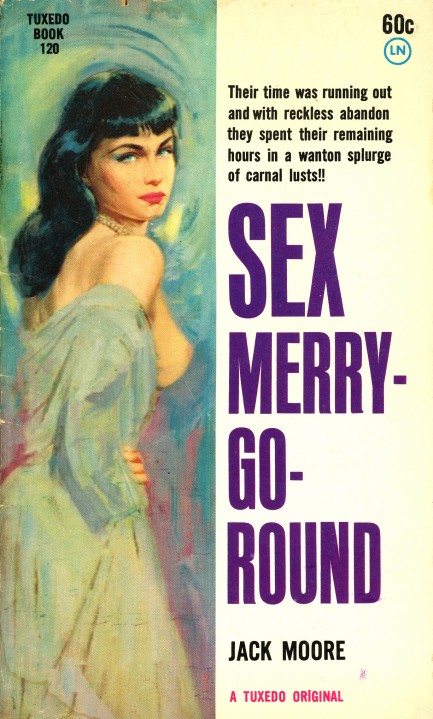
Bettie Page has long been an inspiration in multiple media, and you can include paperback art on the list. These two covers for authors Day Keene and Jack Moore, published in 1959 and 1962 respectively, use Page's instantly recognizable form to draw the eyes of newsstand browsers, a tactic we assume was a wild success. We love both of these, especially the top image by Jack Faragasso. There are even others from the period. The artist on the bottom cover is the legendary Unknown, by far the most prolific mid-century paperback illustrator of all time. We'll doubtless run across more from the same genius later.
 The cover tries to shift the blame, but Sweet and Deadly is man-on-man mayhem at its most basic. 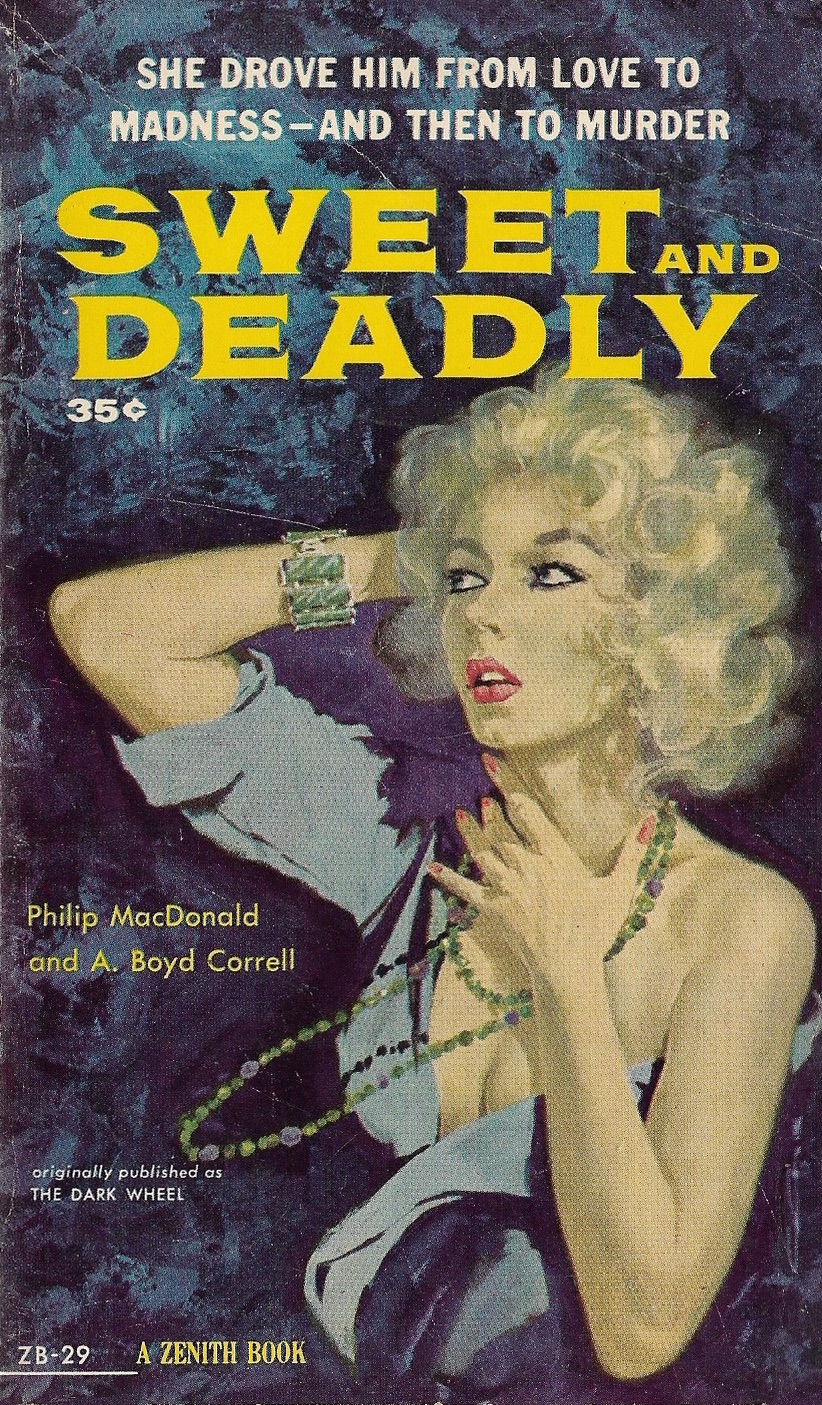
The cover of Sweet and Deadly is pulp style, thanks to Zenith Books' 1959 rebranding of Philip MacDonald and A. Boyd Correll's 1948 novel The Dark Wheel, but this is actually more a melodrama than a true pulp style novel. And there's no femme fatale, as implied by the title. What you get here is a tangled web woven by men in love, women with ambition, and an homme fatale who has a serious mental problem. To detail it a bit more, when a rich man's actress wife dies, he begins habitually attending the play in which she starred, so that he can observe and obsess over her replacement. Not healthy. The new actress has a psychosomatically paralyzed husband who she thinks will be cured if his brilliant new play is produced. So, not knowing anything about her rich secret admirer, she's steered in his direction looking for financial backing, and unwittingly sets into motion his plan to murder her husband and take his place. However you categorize this one, it was good, if a bit contrived in reaching its climax. Set in the rarefied world of New York City's performing arts community, with characters that are all actors, playwrights, producers, and such, it felt fresh compared to the career criminals that often populate the books we read. Perhaps its most serious flaw—one we always hate—is that its cover art is uncredited.
 You know, every few years we vote about changing the name but just enough people in this town really are hateful. 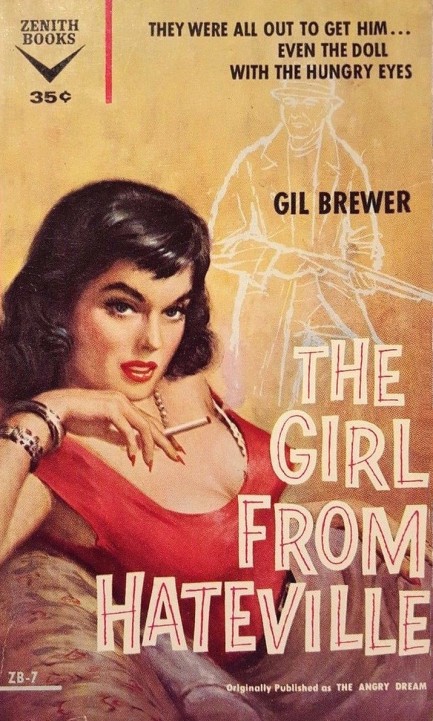
Gil Brewer's The Girl from Hateville was originally published as The Angry Dream, but this is one time changing a title was a good idea. Not only is the original title a bit limp, but Hateville is the perfect word to describe the town at the center of the narrative. These people are rabid. They're furious at the main character because his father, a banker, cost quite a few of them their savings, but geez, people—it was eight years ago and his son wasn't even living there when it happened. But that doesn't matter to the haters. They do just about every horrible thing to the guy you can imagine, even as he's trying to unravel the mystery of the missing bank funds. As hostile-hick-town-versus-innocent-man tales go, this one is pretty good, as well as unusually vicious. This Zenith edition was published in 1958 and has great Samson Pollen cover art.
 He fell for her—hook, line, and sinker. 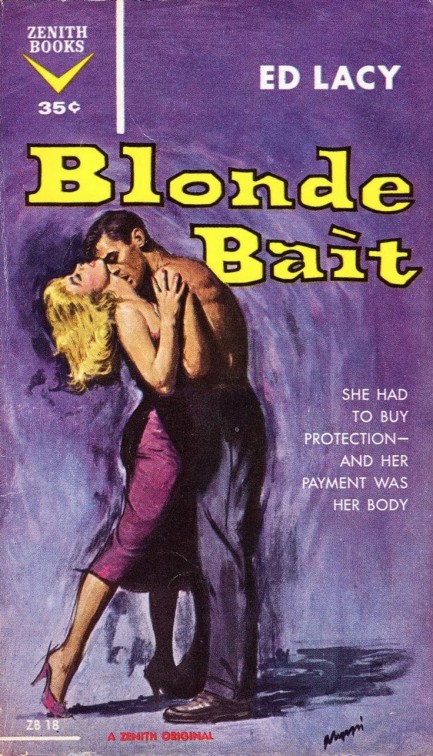
Above is a nice cover for Ed Lacy's Blonde Bait. We talked about Lacy recently—he was a white writer who lived much of his life in Harlem and wrote many black characters. Blonde Bait isn't one of those books. It's about a guy named Mickey who's sailing the Florida Keys on his yacht and comes across a woman stranded on a sand bar. Strangely, she has a suitcase. Her name is Rose, and how she got there, as well as what's in the bag, is what the book is all about. That and whether she's telling the truth about highly connected and dangerous men trying to kill her. Lacy wasn't a master stylist but for those who like books with boats, islands, and mysterious femmes fatales, this one will fit the bill. The art on this beautiful 1959 Zenith Books edition is by Rudy Nappi.
 Very funny. Why don’t you just call it your penis like an adult and stop with that stupid nickname? 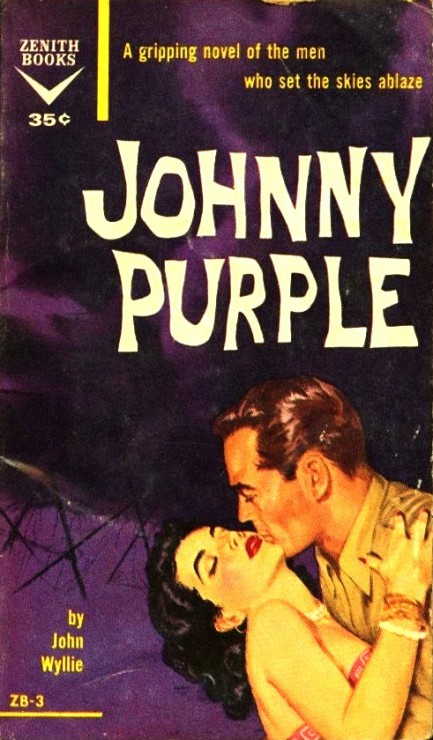
Not only does the book’s title sound like a nickname for a penis, but so does the name of the author—John Wyllie. Well, the story has nothing to do with sex. It’s a World War II saga set in Sumatra and revolving around a group of flyboys. Wyllie got some of his ideas from firsthand experience—he was a flyer for Canada during the war, was shot down, and spent some years in Japanese prison camps. He wrote about a dozen books, with this one coming in 1955 (paperback in ’58), and enjoyed moderate success.
|
 |

The headlines that mattered yesteryear.
2003—Hope Dies
Film legend Bob Hope dies of pneumonia two months after celebrating his 100th birthday. 1945—Churchill Given the Sack
In spite of admiring Winston Churchill as a great wartime leader, Britons elect
Clement Attlee the nation's new prime minister in a sweeping victory for the Labour Party over the Conservatives. 1952—Evita Peron Dies
Eva Duarte de Peron, aka Evita, wife of the president of the Argentine Republic, dies from cancer at age 33. Evita had brought the working classes into a position of political power never witnessed before, but was hated by the nation's powerful military class. She is lain to rest in Milan, Italy in a secret grave under a nun's name, but is eventually returned to Argentina for reburial beside her husband in 1974. 1943—Mussolini Calls It Quits
Italian dictator Benito Mussolini steps down as head of the armed forces and the government. It soon becomes clear that Il Duce did not relinquish power voluntarily, but was forced to resign after former Fascist colleagues turned against him. He is later installed by Germany as leader of the Italian Social Republic in the north of the country, but is killed by partisans in 1945.
|

|
|

It's easy. We have an uploader that makes it a snap. Use it to submit your art, text, header, and subhead. Your post can be funny, serious, or anything in between, as long as it's vintage pulp. You'll get a byline and experience the fleeting pride of free authorship. We'll edit your post for typos, but the rest is up to you. Click here to give us your best shot.

|
|



















































































